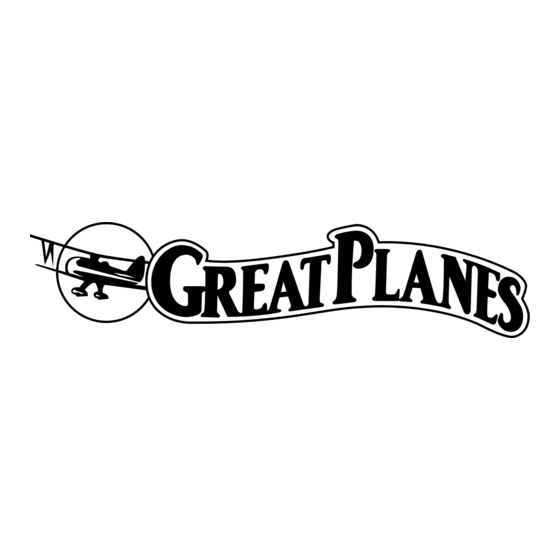GREAT PLANES Micro Whizz 사용 설명서 - 페이지 12
{카테고리_이름} GREAT PLANES Micro Whizz에 대한 사용 설명서을 온라인으로 검색하거나 PDF를 다운로드하세요. GREAT PLANES Micro Whizz 16 페이지.

reversing in the transmitter to reverse the servos connected
to those controls. Be certain the control surfaces have
remained centered. Adjust if necessary.
Set the Control Throws
Use a Great Planes AccuThrow
measure and set the control throw of each control surface
as indicated in the chart that follows. If your radio does not
have dual rates, we recommend setting the throws at the
low rate setting.
Note: The throws are measured at the widest part of the
elevators, rudder and ailerons.
These are the recommended control surface throws:
High Rate
ELEVATOR:
1" [25mm] up
1" [25mm] down
RUDDER:
13/16" [20mm] right 5/8" [16mm] right
13/16" [20mm] left
AILERONS:
1" [25mm] up
1" [25mm] down
IMPORTANT: The Great Planes Micro Whizz ARF has
been extensively flown and tested to arrive at the throws
at which it flies best. Flying your model at these throws
will provide you with the greatest chance for successful
first flights. If, after you have become accustomed to the
way the Great Planes Micro Whizz ARF flies, you would
like to change the throws to suit your taste, that's fine.
However, too much control throw could make the model
difficult to control, so remember, "More is not always better."
When you have completed this section, replace the
propeller onto the airplane.
™
(or a ruler) to accurately
Low Rate
5/8" [16mm] up
5/8" [16mm] down
5/8" [16mm] left
5/8" [16mm] up
5/8" [16mm] down
Balance the Model (C.G.)
More than any other factor, the C.G. (balance point) can
have the greatest effect on how a model flies, and may
determine whether or not your first flight will be
successful. If you value this model and wish to enjoy it for
many flights, DO NOT OVERLOOK THIS IMPORTANT
PROCEDURE. A model that is not properly balanced will
be unstable and possibly unflyable.
At this stage the model should be in ready-to-fly condition
with all of the systems in place including the motor, landing
gear, battery, and the radio system.
1. Use a felt-tip pen or 1/8"-wide tape to accurately mark
the C.G. on the bottom of the wing on both sides of the
fuselage. The C.G. is located 2-1/2" [64mm] back from the
leading edge of the wing.
This is where your model should balance for the first
flights. Later, you may wish to experiment by shifting the
C.G. up to 2-3/8" [67mm] forward or 3" [76mm] back to
change the flying characteristics. Moving the C.G. forward
may improve the smoothness and stability, but the model
may then require more speed for takeoff and make it
more difficult to slow for landing. Moving the C.G. aft
makes the model more maneuverable, but could also
cause it to become too difficult to control. In any case,
start at the recommended balance point and do not at
any time balance the model outside the specified range.
12
